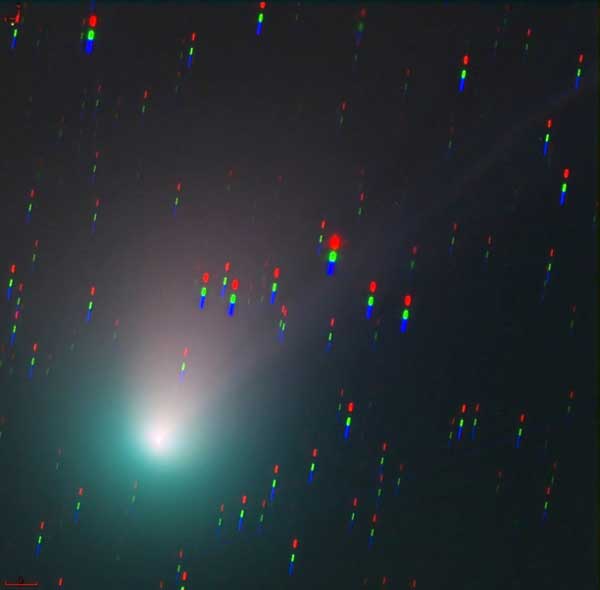MGA Professor Explains The ‘Green’ Comet
Author: News Bureau
Posted: Wednesday, January 25, 2023 12:00 AM
Categories:
Pressroom | School of Health and Natural Sciences | Students | Faculty/Staff
Macon, GA

Image: Wikimedia Commons
Have you heard the hype about a rare “green” comet currently traveling through our solar system for the first time in 50,000 years? We wanted to know more so we asked our go-to astronomy consultant - Dr. Lawrence Camarota, Middle Georgia State University assistant professor in the Department of Natural Sciences.
What is this comet's name?
The official name of the comet is C/2022 E3 ZTF. The ‘C’ means that is a comet that we have not seen before, and we don’t expect to see again in the next 200 years. 2022 is the year it was discovered, E is because it was discovered in the first half of March, and 3 means it was the third comet discovered in that time period. Finally, ZTF means that it was discovered by the Zwicky Transient Facility
What's special about it?
There are a couple reasons for this. First is that it is a comet that could be seen with just your eyes under ideal conditions, although most people will need a telescope or binoculars. Second is that it is from very far away, from a region in space hypothesized to contain a debris field called the Oort cloud. Third, it has been traveling a very long time; the last time this comet was near the sun, stone tools were the cutting edge of technology. Finally, it has been getting a lot of attention because of its green coma.
Why is it green?
The leading theory is that it contains a chemical called dicarbon. Dicarbon often is produced on Earth when natural gas or other hydrocarbons are burned, but it doesn’t last very long unless at low temperature and pressure. This dicarbon can undergo a photochemical reaction that takes in ultraviolet light from the sun, and emit green and infrared light, but our eyes can only see the green. Oddly, it appears that there is only dicarbon on part of the comet, the coma on one side is green, but the coma on the other side is the more usual white.
What's the best way to try to see it?
While it could be seen by eye, it will require very good conditions; an area far from cities, buildings, or other ground based light, and no moon. Unfortunately, the time when it is most bright coincides with a full moon. The best times to view it are January 21-28 around 2AM, or February 6-13 around 10PM. Even at the ideal time and place it will still be at the limits of unaided eyesight. However, even a halfway decent pair of binoculars should be able to make it visible. The comet will be close to the north star. It will be between the dippers in January, and moving toward Orion in February.
Dr. Lawrence Camarota graduated with a B.S. in physics and a B.S. in aerospace engineering from the University of Florida. He earned a Ph.D. in physics with a focus on astronomy from the University of Arizona. He is a member of the American Association of Physics Teachers, the Royal Astronomical Society, and the Friends Society. His areas of interest are astrophysics, cosmology, electronics, and wavelets.